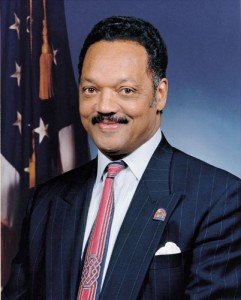65 Years After Brown v. Board of Education
Jesse Jackson | 5/17/2019, 7:31 a.m.
This week marks the 65th anniversary of Brown v. Board of Education, the unanimous Supreme Court decision that outlawed apartheid in America, declaring segregated schools "inherently unequal" and unconstitutional. Today, the common sense of the Brown decision is under attack. For nearly three decades, our schools have been re-segregating, reversing the progress made under Brown, reflecting the deep racial and economic segregation of our communities. Worse, several of Donald Trump's nominees to the federal courts refuse even to endorse Brown as unassailable law. As the United States grows more diverse, we run the risk of becoming more separate and more unequal.
The decision in Brown was and is compelling. Racially segregated schools were and are inherently separate and unequal. They also were and are unequal in resources. In affluent, largely white suburbs, public schools are new, modern, with advanced facilities and courses and good teachers. In low-income, minority neighborhoods, schools tend to be old, dilapidated, with less experienced teachers, fewer resources and fewer advanced courses.
Research shows that integration works. Segregation injures the chances for achievement, college success, long-term employment and income of students of color. Integration raises those chances with no detriment to white students. Indeed, the experience of going to a diverse school better prepares students of all races for the world they will enter.
With neighborhoods largely segregated -- a legacy of racially restrictive laws and covenants, of bank and real estate red lining and more -- integration of public schools inevitably required busing. Busing, of course, is routine across America, a service to parents. But opponents of integration used "forced busing" to rouse fears and hatred. The question was never about busing, it was about where the bus delivered the students.
When the federal courts, packed by judges appointed by Ronald Reagan and George H.W. Bush, retreated from desegregation orders, the schools began to re-segregate. Now, as Rep. Robert C. "Bobby" Scott (D-VA), chair of the House Committee on Education and Labor concludes: "After four decades without federal support for desegregation, we are right back where we started," with schools that are increasingly separate and unequal.
A recent report, Harming Our Common Future: America's Segregated Schools 65 Years After Brown, by the UCLA Civil Rights Project and the Pennsylvania State University Center for Education and Civil Rights detailed the bleak reality. As the Washington Post's Valerie Strauss summarizes, "Over the past three decades, black students have been increasingly segregated in intensely segregated schools (defined as 90 to 100 percent nonwhite)." By 2016, 40 percent of all black students were in segregated schools. The worst states? The "blue" states of New York, California, Illinois and Maryland, with New York the most segregated for blacks and California the most segregated for Latinos.
This isn't just an urban problem: our suburbs are increasingly divided by race, with African-American suburban students attending schools that are three-fourths nonwhite, and white students in the same suburbs going to schools that are, on average, two-thirds white. Charter schools -- increasingly a profit-making venture rather than an educational one -- are even more segregated than traditional public schools.
Schools are segregated because our neighborhoods are segregated. Without residential integration and without metropolitan-wide integration policies, segregation will intensify, even as the country grows more diverse. Yet requirements that communities pursue residential integration remain unenforced and programs to subsidize scattered affordable housing are weak at best.
Now 65 years later, we face a stark choice: the promise of Brown or a country torn apart by racial tensions. Sadly, as Sherrilyn Ifill, president of the NAACP Legal Defense and Education Fund, reports, Donald Trump's nominees to the federal bench increasingly refuse to endorse Brown v. Board as unassailable law. The Republican Senate is about to confirm three of these judges to lifetime appointments. Like the Voting Rights Act, gutted by five right-wing justices in the Shelby case, Brown v. Board of Education itself may be at risk.
Sixty-five years later, with our country more diverse than ever, we must once again decide if we will be one nation, with liberty and justice for all. That cannot be left to right-wing judges or timorous politicians. It is time once more for citizens of conscience to call this nation back to its better angels.
(You can write to the Rev. Jesse Jackson in care of this newspaper or by email at jjackson@rainbowpush.org. Follow him on Twitter @RevJJackson.)




